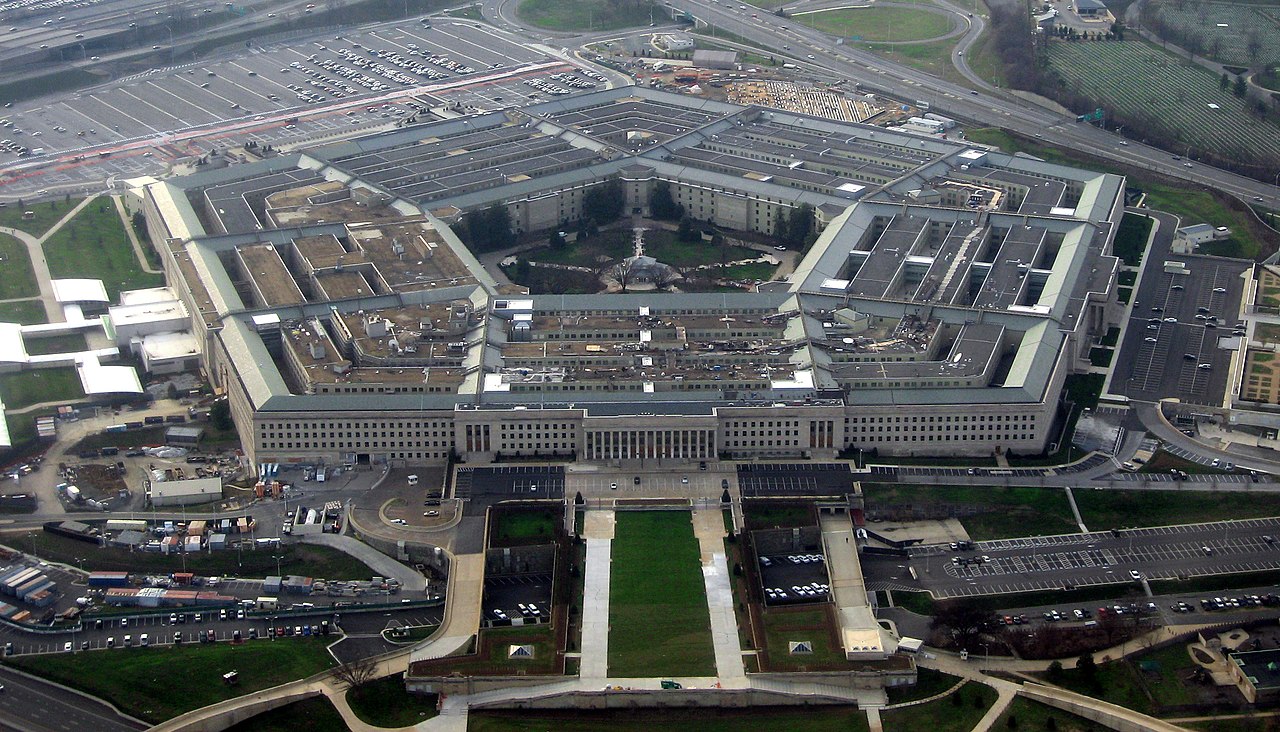Cluster Munitions and Operational Considerations
Military necessity, humanity, and the complicated realities of conflict regulation.

Published by The Lawfare Institute
in Cooperation With

Ukraine is now armed with U.S. cluster munitions or, to be more precise, dual-purpose improved conventional munitions (DPICM). These munitions are fired from cannon or rocket artillery assets and disperse hundreds of “bomblets” over a targeted area (other cluster munitions may be delivered from aircraft). Each round contains hundreds of sub-munitions, ideal ammunition for attacking enemy assembly areas, refueling locations, runways and aircraft on the ground, convoys of unarmored or lightly armored vehicles, and many other operationally valuable targets. In one sense, what’s done is done. But in another, the concerns raised by criticism of the U.S. transfer decision raise a profound issue: the legitimacy of the use of any weapon systems during the conduct of hostilities.
Most criticism of the U.S. decision focuses on the humanitarian risks associated with employing DPICM, notably the risk of indiscriminate consequences as the result of a “dud” rate: the percentage of sub-munitions that fail to explode and pose an ongoing risk of inflicting death or injury on civilians (or friendly forces). According to Under Secretary of Defense for Policy Colin Kahl, the U.S. will “be providing [Ukraine] our most modern DPICMs with dud rates assessed to be under 2.35 percent, demonstrated through five comprehensive tests conducted by the Department of Defense between 1998 and 2020.”
The dud risk is why most nations—but not the United States—chose to join the Convention on Cluster Munitions and remove this ammunition and accordant combat capability from their respective military arsenals. Why would the United States, and Ukraine, continue to count themselves among outlier nations that have not yet done so? Similarly, how can the United States credibly condemn Russian forces for employing this ammunition knowing full well that U.S. armed forces retain (and have employed) the same capability?
The answer is threefold.
First, the debate over cluster munitions is a genuine parable for the broader and ongoing process of striking a balance between the necessities of war and the humanitarian imperative of mitigating the risk of unnecessary suffering of both civilians and combatants.
Second, unlike the United States, the countries that have become parties to the convention are unlikely to conduct prolonged combat operations and/or to lead a prolonged coalition efforts against highly capable opponents.
Third, the more important question is not whether DPICM will be used in Ukraine, but how they are being used.
The U.S. decision to empower Ukrainian commanders with this powerful combat capability is now behind us. Many observers believe this decision was a mistake; others believe it was justified by the nature of the fight Ukraine is waging. The question to be asking now is whether the U.S. has also demanded the type of commitment to a legitimate use of that capability that our nation must demand of our own commanders.
The Enduring Challenge of Balancing Wartime Necessity and Humanity
Striking an effective balance between the necessities of war and the humanitarian imperative to mitigate the suffering of war is the very essence of the law of armed conflict (LOAC). The efforts to define the limits on the types of combat capabilities available for those engaged in hostilities, and the manner by which those capabilities may be employed, is an ever-evolving process of international law influenced by nation-states and many other entities. While there has rarely been consensus on the weight to accord to these often-competing sides of the scale, the goal must be to achieve a legitimate and rational balance between these interests. That goal is advanced not only by demanding compliance with fundamental principles of targeting operations—distinction, proportionality, and precautions—but also by limits on types of weapons and ammunition that may be employed in combat.
That so many nations have divested themselves of cluster munitions reflects the view that denying their armed forces the use of this ammunition is justified by LOAC’s humanitarian objective. But this is not a universal position. From a military operational perspective, DPICM is considered an especially effective capability. For armed forces facing contingencies that involve high-intensity conflict against enemies with substantial combat capabilities—capabilities that often include numerical superiority—DPICM is a critically important asset enabling commanders to shape the battlefield and conduct decisive operations.
Do they create an unfortunate risk of indiscriminate effects on civilians and friendly forces? Absolutely. By their very nature, these wide-area dispersal weapons coupled with an established dud rate mean that the risk of unintended harm may linger for years. But this risk, at least for the United States and obviously Ukraine, is one that is offset by the operational advantage that DPICM provide to their forces when the use of this ammunition complies with LOAC targeting principles. For the United States, it is the per se prohibition on the use of this capability that creates the risk of distorting the balance between military necessity and humanity, a distortion produced by depriving operational commanders of this attack option no matter the tactical situation. In so doing, the categorical ban deprives these forces of a capability that facilitates critically important operational effects other systems cannot match.
Thus, what we are left with is a chasm between competing views on the acceptable balance between operational necessity and humanitarian protection. Many states and observers believe the U.S. and Ukraine are on the wrong side of this divide, but so long as the divide remains, it is imperative to demand that if this ammunition is employed, it is done in a manner that complies with broader LOAC obligations.
It is also important to recognize that prohibiting all use of DPICM would not eliminate humanitarian risk, nor would it prevent the use of alternative indirect fire assets in an effort to achieve military operational objectives. However, operational challenges related to volume of fire, resupply rates, and density and accuracy of fires needed to produce an intended effect on the enemy are frequently alleviated by DPICM, which by design are intended to produce an area-wide effect in a far more efficient manner than by using other artillery or rocket munitions.
Furthermore, those other means, such as high-explosive artillery fires, mortar fires, and air-delivered high-explosive munitions also present a similar type of dud rate risk associated with DPICM. Indeed, a 2002 U.S. Army Corps of Engineers report addressed the dud rate range for other commonly employed U.S. ammunition:
60mm mortar ammunition: 1.07 percent and 3.35 percent
81mm mortar ammunition: 2.16 percent and 2.28 percent
90mm recoilless rifle ammunition: 2.76 percent and 13.8 percent
105mm artillery ammunition: 3.66 percent and 4.39 percent
155mm artillery ammunition: 2.75 percent
These other types of indirect fire ammunition have and will continue to be employed extensively by Ukrainian forces. For example, a July 2023 Newsweek article claimed that, on average, Ukrainian forces fire an average of 5,000 artillery rounds per day, a number that almost certainly does not include mortar fires. And, unfortunately, all such ammunition poses a risk of contaminating the battle space with unexploded ordnance. As a 2022 BBC story explained, there are still thousands of unexploded bombs from World War II throughout Europe. That danger may be more widespread in relation to cluster munitions, but there is also an important difference related to tactical effects that, at least from an operational perspective, may justify this risk.
Dud rates and lingering danger is an unquestionable humanitarian cost of war. But the most fundamental mission of armed forces is to employ fires and maneuver to close with and destroy their enemy. Artillery-, rocket-, mortar-, and air-delivered ammunition plays a critical role in this equation—the “fires” component of employing decisive combat power. These fires almost always create humanitarian risk. But while mitigating that risk is a critical aspect of implementing LOAC’s humanitarian imperative, the calibration between those risk mitigation measures and the imperative of enabling decisive combat operations must be thoughtful and legitimate.
A More Nuanced Understanding of The Convention
Much has been made of the Convention on Cluster Munitions’s prohibitions and its 111 state parties. Both that participation and the convention’s prohibitions—and qualifications—warrant closer scrutiny.
In terms of the parties to the convention, it’s worth noting that:
The 80-plus states that are not parties to the convention account for significantly more of the Earth’s population (and land mass) than the states that are party to it.
Only one state party, Japan, is listed in the top five of Statista’s “Global Firepower PowerIndex,” which assesses overall military capabilities of armed forces around the world.
The state parties to the convention are, for the most part, not countries able to unilaterally conduct prolonged military combat operations and/or to lead coalition efforts to engage in such operations. Conversely, the countries that are able to conduct those kinds of military operations are not parties to the convention.
Joining the convention is certainly a signal that these states don’t feel retaining this capability is essential. But for major U.S. allies—potential future coalition partners—this is at best a qualified position. Article 1 of the convention does provide that:
Each State Party undertakes never under any circumstances to:(a) [U]se [cluster munitions];
(b) [D]evelop, produce, otherwise acquire, stockpile, retain or transfer to anyone, directly or indirectly, cluster munitions;
(c) [A]ssist, encourage or induce anyone to engage in any activity prohibited to a State Party under this Convention.
However, in Article 21(3), the convention contains an interoperability exception:
3. Notwithstanding the provisions of Article 1 of this Convention and in accordance with international law, States Parties, their military personnel or nationals, may engage in military cooperation and operations with States not party to this Convention that might engage in activities prohibited to a State Party.
By comparison, the Convention on the Prohibition of the Use, Stockpiling, Production and Transfer of Anti-Personnel Mines and Their Destruction contains no such exception. Perhaps, then, it is not all that surprising that the United States chose to retain its DPICM capability. After all, its armed forces must be prepared to lead major coalition combat operations involving contingencies such as an attack on South Korea (another state that has declined to join the Convention on Cluster Munitions and would benefit from U.S. employment of ammunition) by a capable and numerically superior North Korean military. That so many potential operational partners will not possess this capability makes U.S. retention of cluster munitions that much more important.
The Imperative Ongoing Focus
This leads to what is now perhaps the most important aspect of the U.S. decision to preserve this capability and, when it determines necessary, transfer this weapon system to allies who share the view that it remains lawful: ensuring it is employed in a manner consistent with broader LOAC obligations, most notably distinction, precautions, and proportionality. It is undeniable that every use of DPICM creates a risk of unexploded bomblets that will, like the unexploded munitions that still take the lives of farmers plowing the fields of France and other World War II battlefields, create mortal danger for civilians for years to come. Accordingly, measures to mitigate this risk are essential. This includes retaining comprehensive records of target locations in order to facilitate clearing or cordoning efforts once the territory is reclaimed. Ukraine’s ultimate goal is to reclaim the areas likely subject to attack with DPICM, it is operationally illogical not to maintain such records. Why? Because commanders will want to mitigate the risk not only to civilians but also of equal significance to fratricide of their own ground forces tasked with reclaiming occupied territory. In fact, this is why U.S. commanders are extremely cautious when employing DPICM in support of offensive ground operations. It is also why such records should extend to other types of indirect fires to mitigate the postconflict risk to the civilian population, a risk that led to the adoption by many states (including the United States and Ukraine) of a different treaty focused on mitigating the dangers arising from explosive remnants of war. Commanders must also issue preattack warnings to the civilian population whenever doing so is feasible (in the sense that Ukraine has the capability to issue the warning) and will not compromise operational advantage.
The U.S. focus must now turn to the quality of the attack decision-making processes used by Ukrainian commanders, especially when employing weapon systems like DPICM that create such potential humanitarian risk. That process must ensure these commanders are committed to implementing the “constant care” obligation—that they and their subordinates will constantly endeavor to employ combat power in a way that achieves tactical and operational objectives while at the same time doing all they can to mitigate the risk to civilians resulting from that employment.
That the integrity and morality of those entrusted with employing a vast arsenal of destructive combat power is the genuine decisive point for implementing the LOAC’s essential balance between necessity and humanity has been tragically illustrated by Russian commanders and their subordinates. Yes, the United States was quick to condemn the use of cluster munitions by Russian forces in Ukraine. But in truth it was the “where, when, and how” that ammunition was employed—by any measure in complete disregard of the most basic and universal LOAC principles—that triggered that condemnation, not just the nature of the ammunition. For example, the United Nations and nongovernmental organizations including Human Rights Watch have documented Russia’s use of cluster munitions in populated areas, including in and around hospitals, schools, and civilian homes. Additionally, the cluster munitions Russia is using in Ukraine have a dud rate of between 30 and 40 percent. This is not to suggest that Russia’s use of this ammunition justifies some type of retaliatory use. Instead, it highlights that the employment of cluster munitions, like any other weapon system, must be consistent with broader LOAC obligations. While the nature of Russian cluster munitions certainly exacerbates their pervasive violations of the LOAC, it is the nature of the targets that suggests at worst deliberate attacks on civilians and civilian property, or at best the use of weapons and tactics in a clearly indiscriminate manner.
Like all their other fires, Russian forces have demonstrated again and again that any weapon system is subject to employment in a manner that disregards the law’s imperative obligation to take constant care to mitigate civilian risk, at best, or, at worst, actually seeks to inflict death, injury, and destruction on civilians and their property. The destructive power of cluster munitions may exacerbate the illicit consequences of employment, but it is the attack judgment in relation to that weapon system that has the greatest influence on the humanitarian risk it creates.
***
All this points to two conclusions. First, it is unrealistic to expect that the United States or Ukraine will disavow the use of DPICM when that use produces a critical combat effect not otherwise achievable using other systems. Second, those entrusted with such attack decisions must embrace their obligation not only to maximize the combat effect of their weapon systems—including DPICM—but to constantly strive to achieve these effects in a way that mitigates civilian risk. They are the ones responsible for fielding and leading forces who understand this imperative. Developing commanders who are fully committed to such attack judgments is the genuine decisive point in implementing the central objective of the law of armed conflict.
The views expressed in this article are those of the author and do not necessarily reflect the views of the United States Government, the Department of Defense, or any other governmental or nongovernmental entity.





